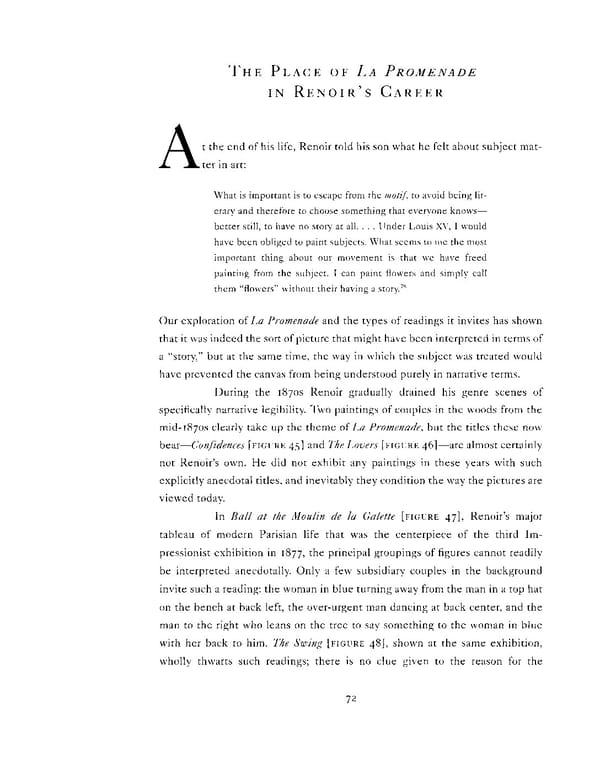THE PLACE OF LA PROMENADE IN RENOIR'S CAREER At the end of his life, Renoir told his son what he felt about subject mat- ter in art: What is important is to escape from the motif, to avoid being lit- erary and therefore to choose something that everyone knows— better still, to have no story at all. . . . Under Louis XV, I would have been obliged to paint subjects. What seems to me the most important thing about our movement is that we have freed painting from the subject. I can paint flowers and simply call them "flowers" without their having a story.78 Our exploration of La Promenade and the types of readings it invites has shown that it was indeed the sort of picture that might have been interpreted in terms of a "story," but at the same time, the way in which the subject was treated would have prevented the canvas from being understood purely in narrative terms. During the 18708 Renoir gradually drained his genre scenes of specifically narrative legibility. Two paintings of couples in the woods from the mid-18708 clearly take up the theme of La Promenade, but the titles these now bear—Confidences [FIGURE 45] and The Lovers [FIGURE 46]—are almost certainly not Renoir's own. He did not exhibit any paintings in these years with such explicitly anecdotal titles, and inevitably they condition the way the pictures are viewed today. In Ball at the Moulin de la Galette [FIGURE 47], Renoir's major tableau of modern Parisian life that was the centerpiece of the third Im- pressionist exhibition in 1877, the principal groupings of figures cannot readily be interpreted anecdotally. Only a few subsidiary couples in the background invite such a reading: the woman in blue turning away from the man in a top hat on the bench at back left, the over-urgent man dancing at back center, and the man to the right who leans on the tree to say something to the woman in blue with her back to him. The Swing [FIGURE 48], shown at the same exhibition, wholly thwarts such readings; there is no clue given to the reason for the 72
 Pierre-Auguste Renoir: La Promenade Page 79 Page 81
Pierre-Auguste Renoir: La Promenade Page 79 Page 81